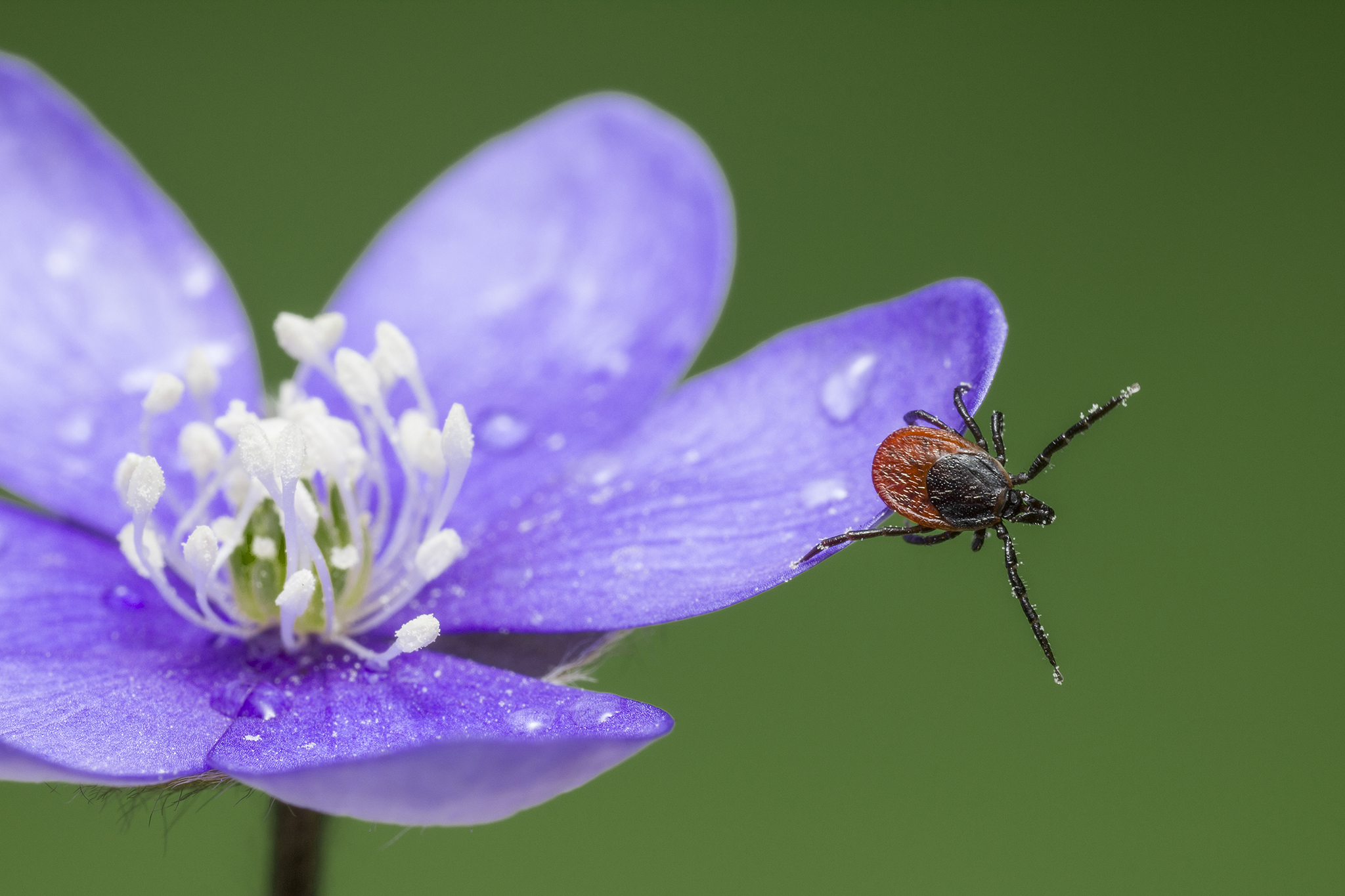Here’s a detailed and scientifically accurate overview of the Castor Bean Tick (Ixodes ricinus), one of Europe’s most common and medically important tick species — a key vector of several diseases affecting humans and animals.
🕷️ Castor Bean Tick (Ixodes ricinus)
Taxonomy
- Kingdom: Animalia
- Phylum: Arthropoda
- Class: Arachnida
- Order: Ixodida
- Family: Ixodidae (Hard ticks)
- Genus: Ixodes
- Species: I. ricinus
Common Names
- Castor Bean Tick
- Sheep Tick
- Deer Tick (in Europe, though distinct from the North American Ixodes scapularis)
General Description
The Castor Bean Tick is a hard-bodied tick (family Ixodidae) recognizable by its flattened oval body, reddish-brown coloration, and small blackish head (capitulum). The name “castor bean tick” comes from the engorged female’s resemblance to a castor bean seed after feeding.
- Size:
- Unfed adults: 2–4 mm (males smaller than females)
- Engorged females: up to 11 mm long
- Color:
- Males: dark reddish-brown, body hard and flat.
- Females: reddish body with dark scutum (shield) on the upper surface.
- Nymphs and larvae: lighter brown to gray.
- Distinct feature: hard scutum (dorsal shield) and backward-pointing mouthparts adapted for anchoring into host skin.
Distribution
- Widespread in Europe: from southern Scandinavia to the Mediterranean, and from Ireland to western Russia.
- Also occurs in parts of North Africa and western Asia.
- Found from sea level up to 1,500 meters (sometimes higher in southern Europe).
Habitat
- Prefers humid, shaded environments such as:
- Deciduous and mixed forests with dense undergrowth
- Woodland edges, meadows, and pastures with tall grass
- Areas frequented by deer, rodents, and livestock
- Requires high humidity (>80%) for survival; desiccation quickly kills unfed ticks.
- Found on vegetation up to 1 meter high, where it waits (“quests”) for a host to pass.
Life Cycle
The Castor Bean Tick has a three-host life cycle, typically lasting 2–3 years, depending on climate and host availability.
- Eggs:
- Laid by engorged females in leaf litter (hundreds to thousands of eggs).
- Hatch after several weeks.
- Larva (“seed tick”):
- Six-legged; feeds on small mammals or birds.
- After feeding, drops to the ground and molts into a nymph.
- Nymph:
- Eight-legged; feeds on small to medium mammals or birds.
- Main vector stage for transmitting Lyme disease to humans.
- Molts into adult tick.
- Adult:
- Females attach to large mammals (deer, sheep, dogs, humans).
- Males feed rarely and mainly focus on mating.
- After a blood meal, females detach, lay eggs, and die.
Behavior and Ecology
- Questing behavior:
- Ticks climb vegetation and extend their front legs to latch onto passing hosts.
- They detect hosts by carbon dioxide, heat, movement, and odor.
- Feeding:
- Uses barbed mouthparts to pierce skin and secrete cement-like saliva to anchor.
- Saliva contains anesthetics and anticoagulants, making the bite painless.
- Feeding lasts several days.
- Seasonal activity:
- Active mainly from March to October (peaks in spring and autumn).
- In warm, humid climates, activity can continue almost year-round.
Medical and Veterinary Importance
Ixodes ricinus is the most important disease vector tick in Europe.
Pathogens transmitted to humans and animals:
| Disease | Pathogen | Type |
|---|---|---|
| Lyme borreliosis (Lyme disease) | Borrelia burgdorferi sensu lato complex | Bacterium |
| Tick-borne encephalitis (TBE) | Tick-borne encephalitis virus | Virus |
| Anaplasmosis | Anaplasma phagocytophilum | Bacterium |
| Babesiosis | Babesia divergens, Babesia microti | Protozoa |
| Rickettsioses | Rickettsia helvetica | Bacterium |
Effects on hosts:
- Localized skin irritation, redness, and itching.
- Disease transmission can occur after 12–24 hours of attachment (earlier for viruses).
- In livestock: anemia, weakness, and disease transmission affecting productivity.
Prevention and Control
Personal protection:
- Wear long sleeves and trousers, tucking them into socks.
- Use tick repellents (DEET, permethrin-treated clothing).
- Check skin thoroughly after outdoor activity, especially warm, moist areas (armpits, groin, behind ears).
- Remove ticks promptly using fine-tipped tweezers, grasping close to the skin and pulling steadily.
Environmental control:
- Maintain short grass and clear undergrowth in tick-prone areas.
- Manage populations of deer and rodents, which act as hosts.
- Vaccination is available for tick-borne encephalitis (TBE) in humans.
Identification Tips
| Life Stage | Legs | Size | Host Preference |
|---|---|---|---|
| Larva | 6 | <1 mm | Small mammals, birds |
| Nymph | 8 | 1–2 mm | Small mammals, humans |
| Adult female | 8 | 3–11 mm | Large mammals, humans |
| Adult male | 8 | 2–3 mm | Large mammals (rarely feeds) |
Conservation and Climate Influence
- Not endangered — increasing in range and abundance due to:
- Warmer winters (climate change).
- Expanding deer populations.
- Reforestation and suburban development near wildlife areas.
- Now appearing in higher altitudes and northern latitudes than in the past.
Interesting Facts
- Can survive over a year without feeding while waiting for a host.
- The bite is painless and often unnoticed.
- Engorged females increase body weight up to 100 times after feeding.
- Ticks do not jump or fly — they rely on direct contact with a passing host.
- A single tick can transmit multiple pathogens in one bite.
Views: 160
Subscribe to the newsletter:
